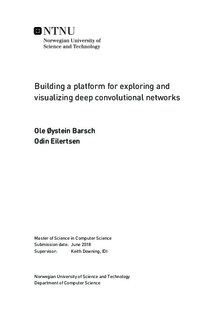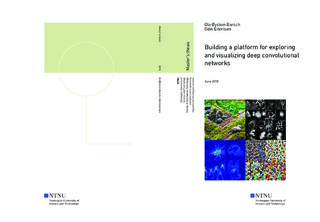| dc.description.abstract | Deep artificial neural networks are showing a lot of promise when it comes to tasks
involving images, such as object recognition and image classification. In recent
years, there has been a steady increase in computing power, which has opened for
the possibility of training deeper and more complex artificial neural networks. This,
in addition to improved training methods, has been a major contributing factor
for creating a new wave of AI within computer science. However, as artificial
intelligence becomes more complex, it gets increasingly harder to explain an AIs
reasoning. It is intriguing that computers achieve human-like results for image
classification tasks, but from a research point of view, the reason why it performs
so good might be even more interesting.
In this thesis, we aim to get a better understanding of deep convolutional neural
networks. We attempt to increase our knowledge of these networks by creating
a platform where one can apply different visualization methods on different pretrained
network architectures. First, we introduce the concept of convolutional
neural networks, and how they work. We then give an introduction to the field of
visualizing neural networks by explaining several state-of-the-art methods which
aim to give a better understanding of neural networks. After introducing multiple
methods, we explain our implementation of a selected few. We also give an
introduction to the platform we created for handling the different visualization
techniques. Included in this platform is a user interface, which simplifies the process
of applying visualization techniques to different networks and retrieving the
results. Finally, we examine the implemented techniques, while trying to explain
their behavior and what information they can give us about a convolutional network.
Additionally, we try to combine different visualization methods, to see if they
offer any useful information beyond what each method offers individually.
Interpreting the results of visualizations proved to be a challenging task, but we
still feel like there was some information to be gained from each distinct method.
Certain techniques showed results which could be useful for troubleshooting faulty
networks, while others indicated features which might be vital for correctly classifying
images. Combining different techniques yielded results that were difficult to
interpret clearly, but could prove to be a path worth researching further. | |

